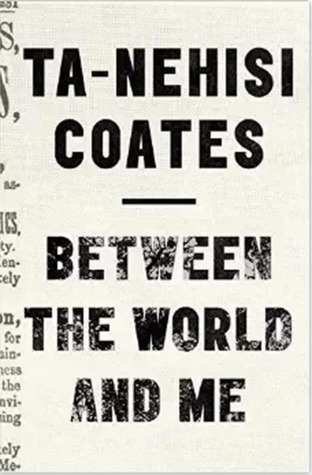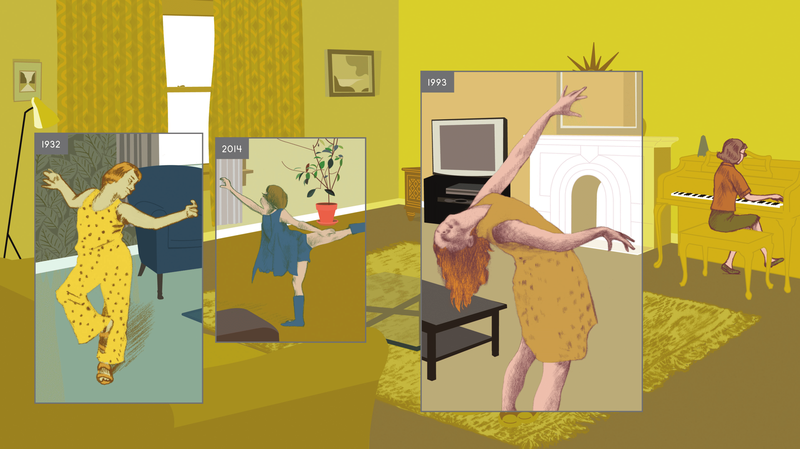Today I have two reviews. Both are books that have been on many year end best lists. Both are two of my favorite reads of the year. But why am I reviewing them together? Because each book resonated more with me because I read the other in conjunction with it. So this will not be a traditional “What I’m Reading” post in that I will not separate my discussions of these two titles; however, this will be an extremely useful post for you to use as you help readers.
In fact, I would argue that this will be a MORE helpful review because I am pairing these books. So much has already been said about
Between the World and Me that I almost didn’t write a review of it. I didn’t feel like I could add anything useful to the conversation. But in organizing the review in the fashion, I truly feel like I am helping you to help a reader.
For the record, that is always my goal with the reviews here on the blog. I try to give you something you cannot get from other review resources. I think this is important to spell out since I have a lot of new readers. These posts are meant to be used to help a reader who either enjoyed the title I am reviewing to find more titles he or she would enjoy OR to help you to match this book with its best reader. I am not writing them to hear myself pontificate. Once these reviews stop being useful, I will stop writing them.
Enough preamble. Let’s get on with the information...
I want to start with
Delicious Foods by James Hannaham, which is the book that most surprised me this year. This was a novel that was clearly on my radar; I had heard it was good before it even came out. I ordered it for my library, and almost checked it out for myself a couple of times. But then, the combination of a review and a personal recommendation put this book on the top of my to-read list-- and they came from the same person.
My very good friend, Magan told me about how much she loved the audio of this novel. She loved it so much that not only did she give the audio a star in her Booklist review, but also she stood her ground and defended her choice to her editor, Joyce Saricks.
Well, it did get a star in the September 1st issue of Booklist, and then this novel went on to be on many year end best lists, many of which singled out the audio for its excellence.
Since it was
Magan’s review that led me to listen to this novel, I am going to let her explain it to you more:
Hannaham’s stunning second novel (after God Says No, 2009) opens with 17-year-old Eddie’s desperate escape from Louisiana, driving a (stolen) car for the first time in his life, minutes after having both of his hands cleaved at the wrists under mysterious circumstances, in search of his aunt in Saint Cloud, Minnesota. It’s a hell of a tale: Eddie’s father was murdered when he was 6, and his mother, Darlene, completely shattered by her grief and guilt, spiraled downward into crack addiction, effectively abandoning Eddie long before she hopped into a minibus to work at Delicious Foods. She’s turned into a modern-day indentured servant in the hellish place, where Eddie eventually joins her. Author Hannaham narrates his harrowing novel and moves between unbelievable scenes of human suffering and dark, sly humor in so skillful a manner that belief is easily suspended while “Scotty,” Darlene’s name for crack, narrates events from his perspective. His voice characterizations bring to vivid life each of the sad collection of broken people at Delicious Foods, ratcheting up the horror without speeding through the plot, concluding with a realistic portrait of the aftereffects of suffering and perseverance on a family. Not to be missed. — Magan Szwarek
Before I add more of my own thoughts here, I want to say that this experience of being compelled to finally read this book because of the work of a librarian, AND having it turn out to be one of my favorites of the year reaffirmed for me why I work so hard to help all of you be better Reader’s Advisors. This book was such a great read that I will always remember it, and I read it because of a librarian suggesting it to me. I am not lying when I tell you in trainings how powerful sharing a reading suggestion with a patron can be.
People, you can be this person for someone out there!
I will suggest this novel for years to come to readers much like I do with
The Miracle Life of Edgar Mint,
The Good Thief,
City of Thieves,
Brief History of the Dead, and
The Snow Child. No none of these are readalikes for each other, but they are all quirky, well constructed, thought-provoking, and emotionally moving stories that do not loose anything over time. While they are not sure bets for every reader who walks through the doors of the public library, they are great under the radar picks for a wide range of readers.

On the other hand,
Between the World and Me by Ta-Nehisi Coates IS a sure bet. I read a lot of books, and I see my fair share of hype about many books that are very good, but not as great as people want you to believe.
Between the World and Me is not that. It is one of the best books I have ever read. It will and should be read by every American at some point in their lives. It will become a classic that is read in schools.
Why? Because Coates takes his personal journey as a black man in America, and lays out the brutal truth, without judging or casting blame-- that is my favorite part about it, the nonjudgmental tone. This is a personal, emotional, and lyrical letter to his son about the truth of race in America, yet Coates takes what is a complex problem, and amazingly puts it into a deceptively short book without sacrificing anything.
Everyone should read this book, but in particular, all white America needs to read this, especially people who think that race is no longer an issue. For example, how many white people think about one of the facts Coates lays out early in the book-- that as a country, we have still had slavery longer than we have not! Of course this is true, but it still shocked me to see it on the page. How can this fact not be at the front of my brain more often. Why have I never had this thought? Of course, someone like Coates lives this fact every day of his life. As a Jewish person, I understand a very small sliver of what Coates is saying, but I can blend in my highly Catholic area. People don’t look at me and know immediately that I am not on team Jesus. Most of them just assume everyone is. When they find out I am not, I am a quaint example of “the other.”
Being black in America is hard enough, but being America’s "
foremost public intellectual,” while being black could be soul crushingly impossible. The fact that Coates handles it so well and produced such an amazing book is awe inspiring.
Back to the first book...
Delicious Foods is written by someone who didn’t need to read Coates’ book because it is obvious from the novel that he, James Hannaham, has lived in Coates’ shoes.
Delicious Foods is proof of Coates’ brilliance, his truths, and the surprisingly succinct way he delivers such a complex message.
Because I read these two powerful and honest books back-to-back, I took more from each-- more knowledge, more enjoyment, more feeling. And yes, I meant to use the word “enjoyment." Despite how heart-wrenching and emotionally raw both books are, I enjoyed the experience of reading them. Both were lyrical, beautiful and compelling. And while both were emotionally difficult to read, neither is “sad.” Both end with hope for a future that is better than today. If others read these books, maybe that better future will happen.
Three Words That Describe Delicious Foods: original, heart-wrenching, haunting
Three Words That Describe Between the World and Me: honest, lyrical, classic
Readalikes [for both]: Since I am reviewing fiction and nonfiction titles together here I have 3 of each to offer up as readalikes.
Fiction-- The 1980s slavery depicted in
Delicious Foods reminded me so much of the masterful
The Known World by Edward P. Jones which is a historical fiction novel based on the fact that there were black slave owners. Both novels are inventive and original with a fluid use of time-line. But this is also a readalike for
Between the World and Me. Both books are beautifully written while also taking a hard and honest look at America’s troubled history with race.
I am suggesting
The Round House by Louise Erdrich because like both books here it looks at a tenuous and fraught history between Americans and those of a persecuted race, but with Erdrich it’s Native Americans. But also, all three books have a coming of age theme. In all three the narrator is able to look back on his life to a critical moment (or moments), assess the racial injustice, and still move on without resorting to simple blame. All three works are also haunting and heartbreakingly beautiful.
My final fiction suggestion may sound a bit odd, but I think it works--
Station Eleven by Emily St. John Mandel. All three works are haunting, lyrical, and moving, with complex characters, that explore hard truths about humanity.
In my review of Station Eleven I chose the word “disquieting” as one of my “three words.” This struck a chord with me when I was thinking about the two books being reviewed here. That word can apply to all three.
Nonfiction--
The Fire Next Time by James Baldwin. Actually, anything by
James Baldwin. Coates openly admits to using Baldwin as an inspiration [not that he could hide it], but I also see much of Baldwin and his anger at injustice in Hannaham’s narrative voice too.
The Other Wes Moore by Wes Moore and/or
Nickel and Dimed: On Not Getting By in America by Barbara Ehrenreich are both books I have read with my book club that elicited the following response-- “Every high school kid in America needs to read this book.” While
Between the World and Me is much richer than these two offerings [they are a both much more of a simplistic look at similar, entrenched, American, societal problems], but the themes are similar. Also as readalikes to
Delicious Foods, both of these suggestions take much of the class and race conflict from the novel and ground it in fact in a way that makes the novel even more realistic.











 The December 15 issue of Booklist magazine is now live. Visit
The December 15 issue of Booklist magazine is now live. Visit 








